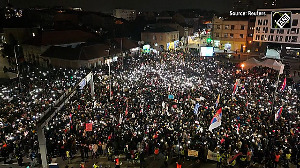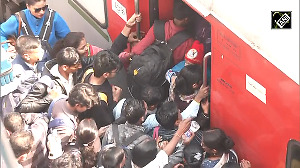However, the Bengaluru police, which arrested several members of the Indian Mujahideen's Kerala module, has named Abdul Sattar as the bomb-maker involved with these acts of terror. So what is the confusion all about?
Intelligence Bureau officials say investigators in both cities could be correct since the blasts in Bengaluru, Delhi, Ahmedabad and Delhi were not executed by a single module. Several IM modules, IB sources say, contributed to the blasts that rocked the nation last year.
In his confession, Riazudin Nasir, an arrested Lashkar-e-Tayiba operative, revealed that about 100 activists of the Students Islamic Movement of India and Indian Mujahideen met in Hubli, Karnataka, a year prior to the blasts.
Later, around 50 men, who had learnt bomb-making, gathered at a hotel near the CBT bus stand in Hubli and assembled the bombs. The bombs were then dispatched to the respective modules to carry out the blasts in various cities. Nasir also spoke about a similar meeting in Surat, where more bombs were assembled.
One IM module would focus on assembling the bombs while another module would supply the timer devices. This process was intended to confuse investigators about the sources for the explosives.
Investigating agencies believe that both Arif and Sattar were part of the teams which assembled the bombs for the serial blasts.
The IB says Riyaz Bhatkal and Abdul Subhan supervised the operation from afar, but the handler for the blasts has yet to be identified.
Investigating officers in Bengaluru told rediff.com that following Sattar's arrest, 50 IM men have been picked up by the police. None of them has revealed the identity of the handler as yet.






 © 2025
© 2025